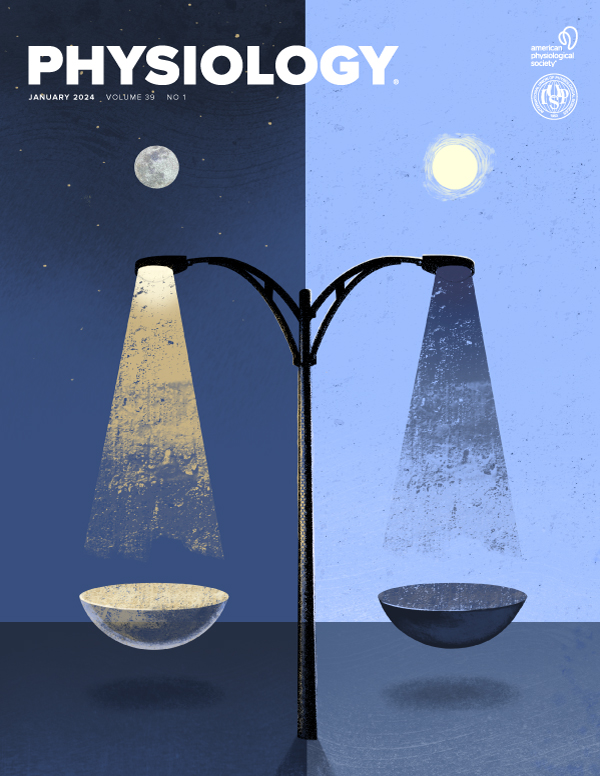Theta Phase Precession and the Dynamics of Spatiotemporal Asymmetry in Hippocampal Place Fields
IF 5.3
2区 医学
Q1 PHYSIOLOGY
引用次数: 0
Abstract
A consistently observed characteristic of hippocampal place fields is the shifting of the field's center of mass and the subsequent development of asymmetry. This is evidenced by the expansion of the place field in an asymmetric manner over repeated traversals, wherein a rat's initial entry into the field prompts a low firing rate that substantially increases as it exits. Our study delves deeper into these spatiotemporal asymmetries of place field spiking, specifically examining their relationship with theta oscillations and disentangling the effects from environmental factors. Analysis of neuronal data from a T-maze alternation task revealed a distinct non-uniform firing pattern of place cells. This pattern was markedly skewed in relation to the phases of theta cycles, indicating a phase precession effect. We found that as the rat navigates through the place field, there is a systematic advancement of spike timing, with action potentials tending to cluster in the early phases of theta during the exit phase of the field. Such temporal coordination of spikes suggests that the timing of neural activity within theta cycles is as integral as spatial location, influencing the dynamics of place field expansion and potentially affecting the hippocampal local field potential. This discovery underscores the role of theta phase precession in spatial encoding, proposing a novel temporal component that could underpin the cognitive map within the hippocampus. R01 MH126236 R01 AG055544. This is the full abstract presented at the American Physiology Summit 2024 meeting and is only available in HTML format. There are no additional versions or additional content available for this abstract. Physiology was not involved in the peer review process.海马区场的θ相位前移和时空不对称的动态变化
海马位置场的一个持续观察到的特征是场的质心移动以及随后的不对称发展。这表现为位置场在反复穿越过程中以不对称的方式扩大,大鼠最初进入位置场时的点燃率较低,而当它离开时点燃率大幅上升。我们的研究深入探讨了位置场尖峰的这些时空不对称现象,特别是研究了它们与θ振荡的关系,并将其与环境因素的影响区分开来。通过分析T迷宫交替任务的神经元数据,发现了位置细胞明显的非均匀点燃模式。这种模式与θ周期的相位明显偏斜,表明存在相位前冲效应。我们发现,当大鼠穿过位置场时,尖峰时间会有系统性的提前,动作电位倾向于聚集在位置场出口阶段的θ早期阶段。尖峰的这种时间协调表明,θ周期内神经活动的时间与空间位置一样不可或缺,它影响着位置场的扩展动态,并可能影响海马局部场电位。这一发现强调了θ相位前冲在空间编码中的作用,提出了一种可能支撑海马认知图谱的新的时间成分。R01 MH126236 R01 AG055544。这是在 2024 年美国生理学峰会上发表的摘要全文,只有 HTML 格式。本摘要没有附加版本或附加内容。生理学》未参与同行评审过程。
本文章由计算机程序翻译,如有差异,请以英文原文为准。
求助全文
约1分钟内获得全文
求助全文
来源期刊

Physiology
医学-生理学
CiteScore
14.50
自引率
0.00%
发文量
37
期刊介绍:
Physiology journal features meticulously crafted review articles penned by esteemed leaders in their respective fields. These articles undergo rigorous peer review and showcase the forefront of cutting-edge advances across various domains of physiology. Our Editorial Board, comprised of distinguished leaders in the broad spectrum of physiology, convenes annually to deliberate and recommend pioneering topics for review articles, as well as select the most suitable scientists to author these articles. Join us in exploring the forefront of physiological research and innovation.
 求助内容:
求助内容: 应助结果提醒方式:
应助结果提醒方式:


